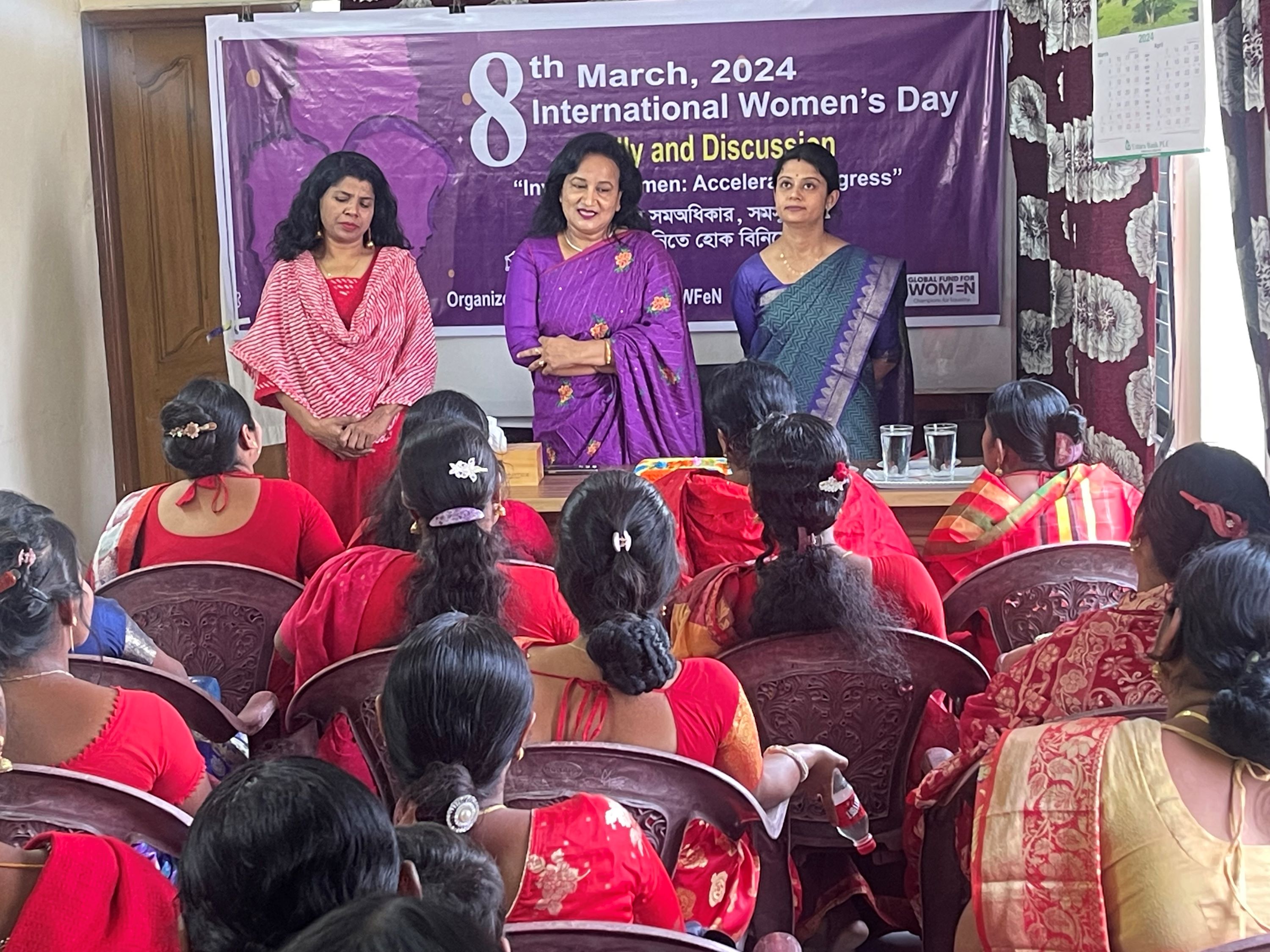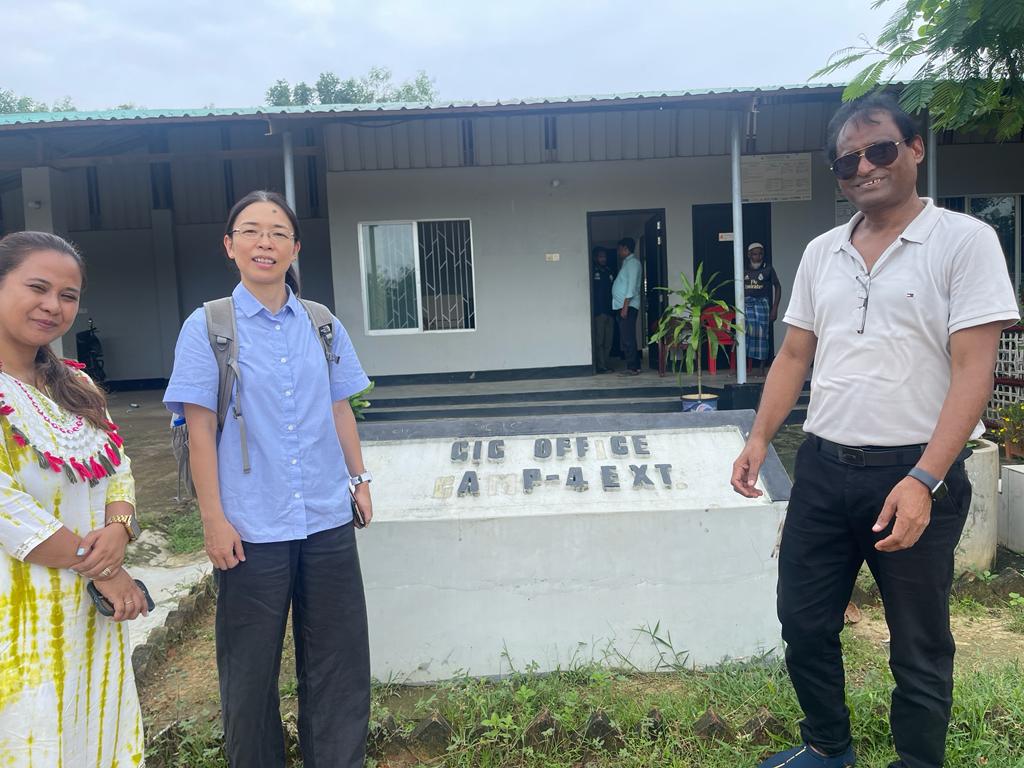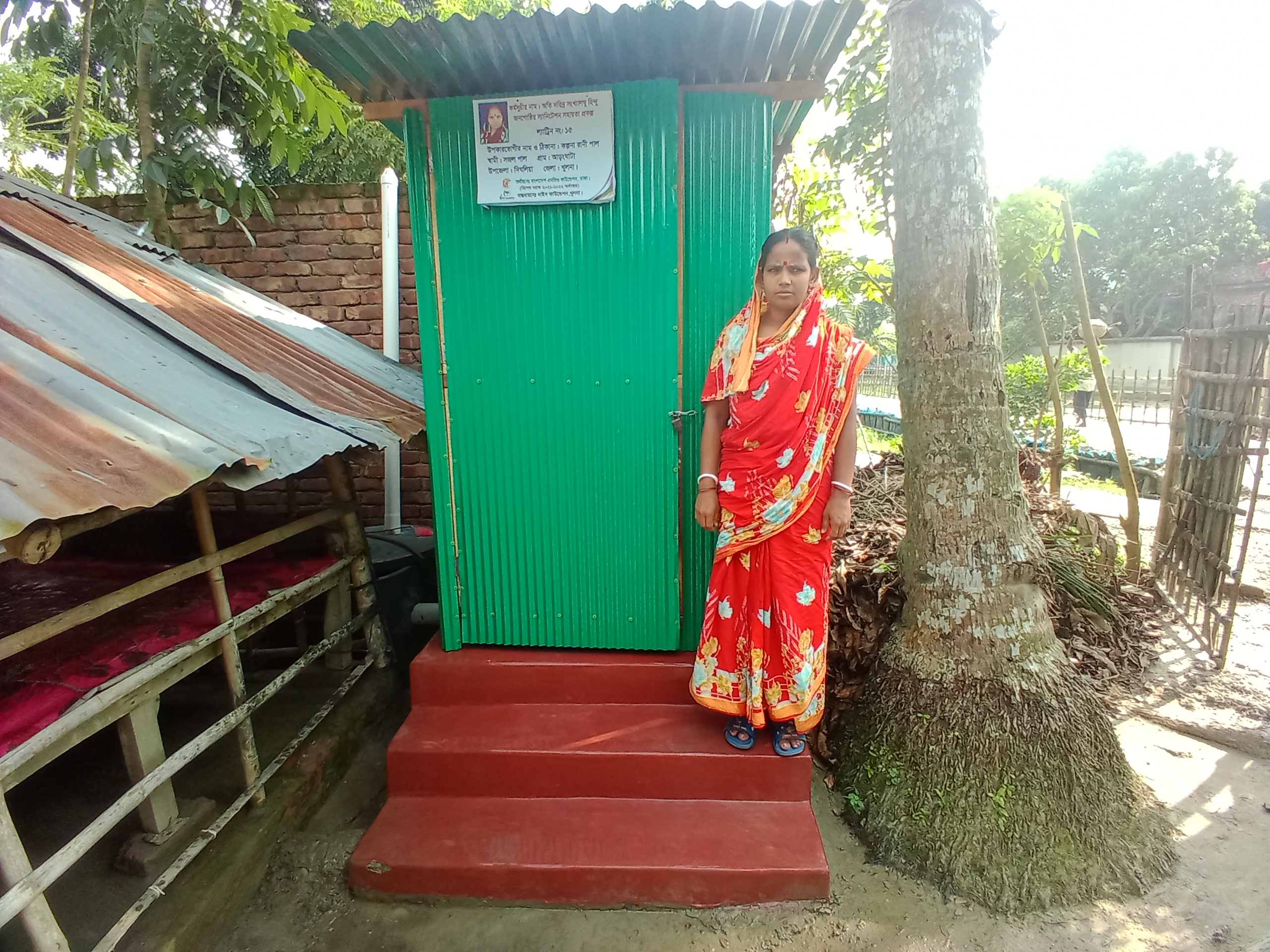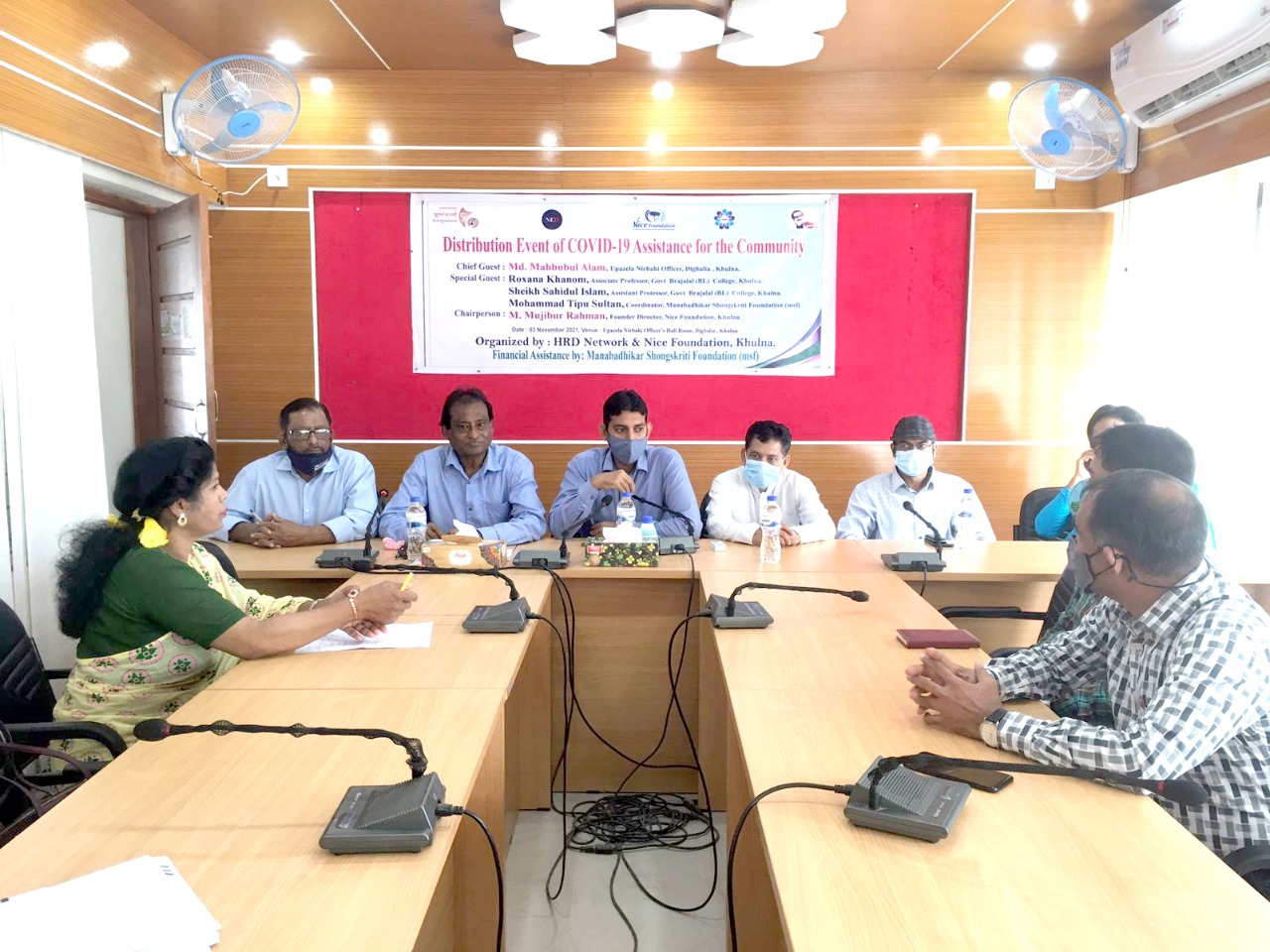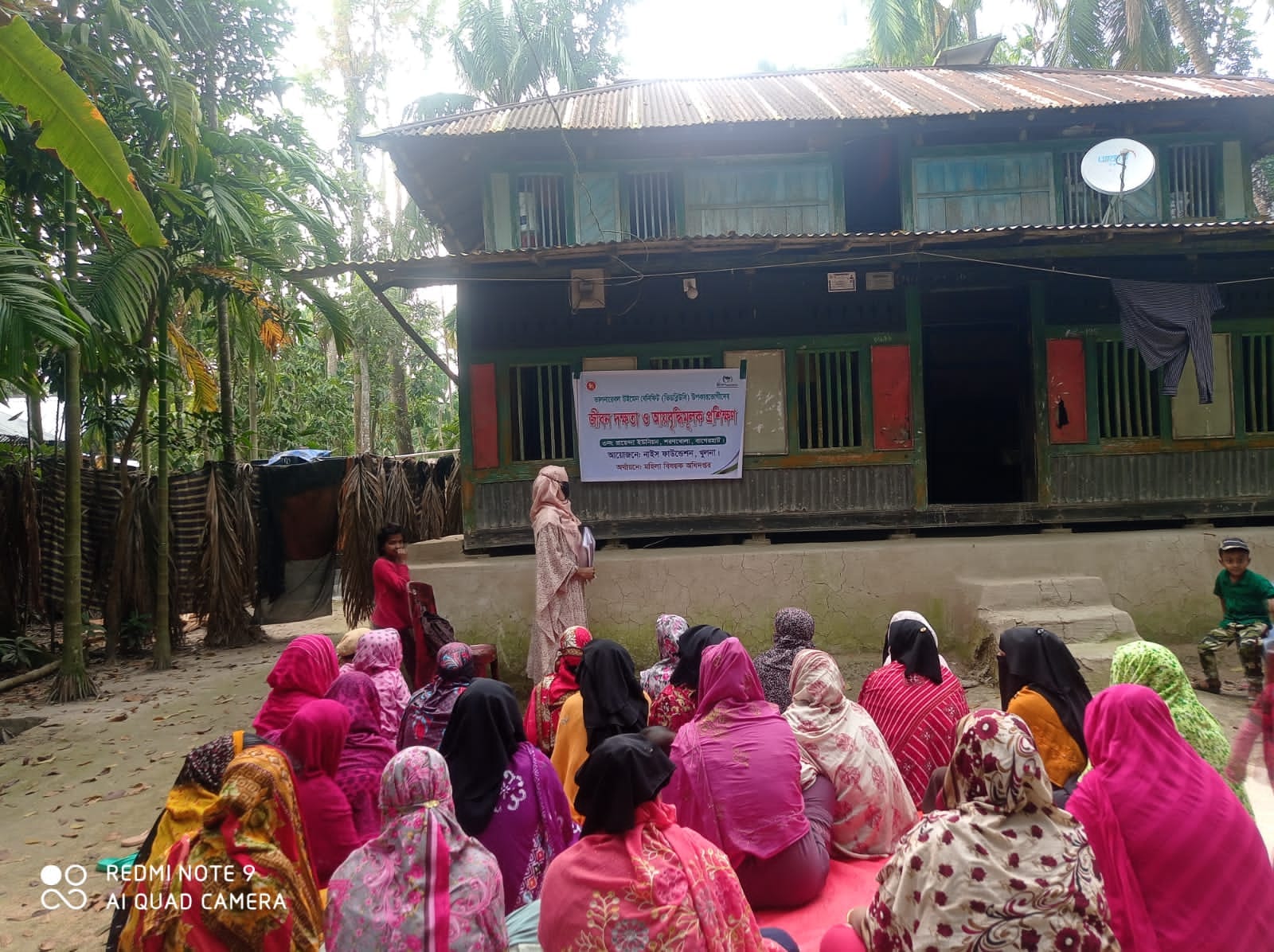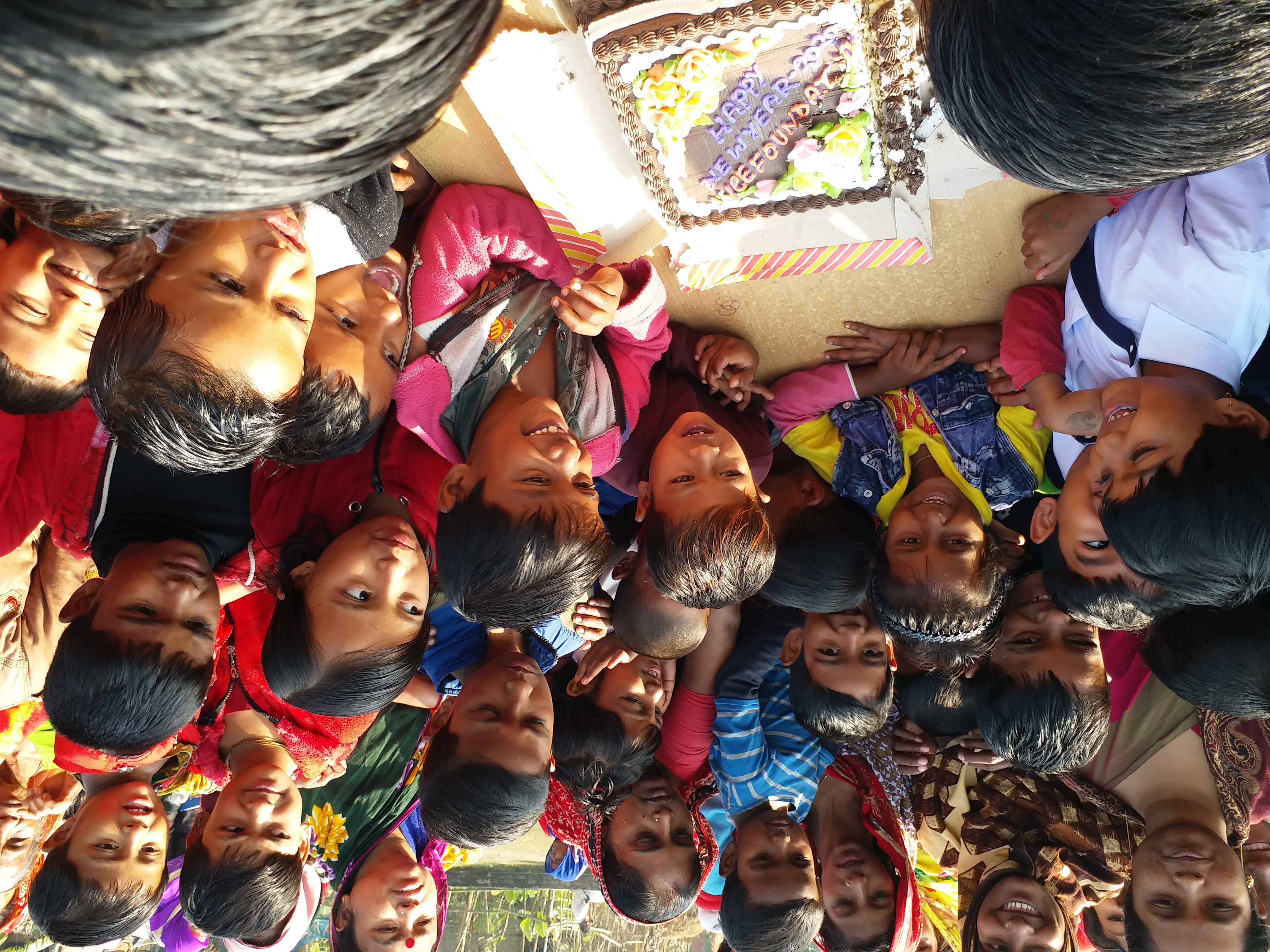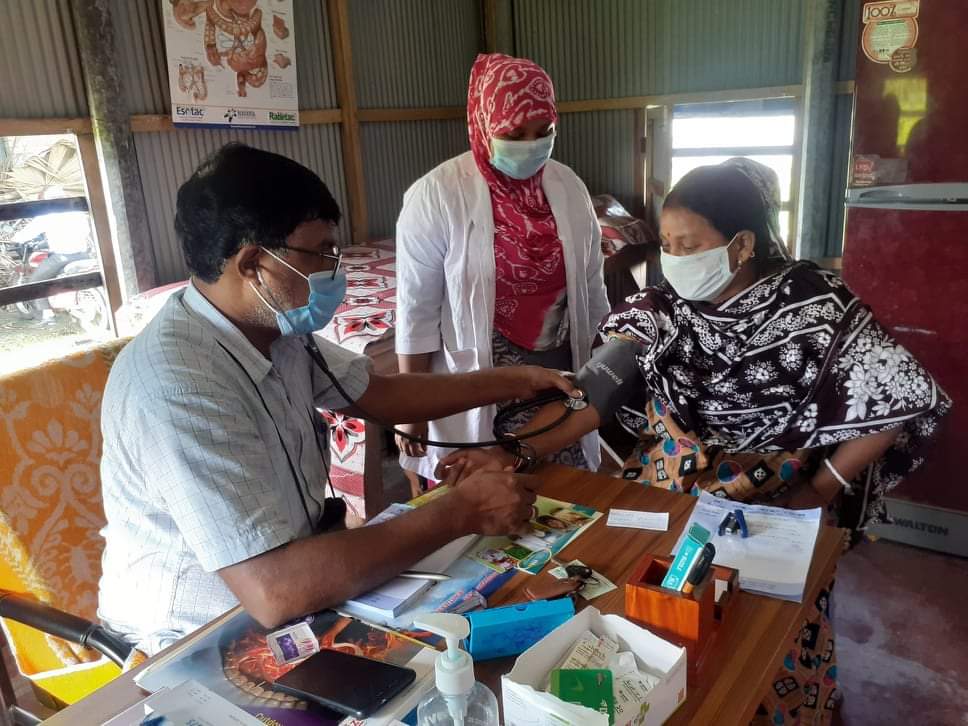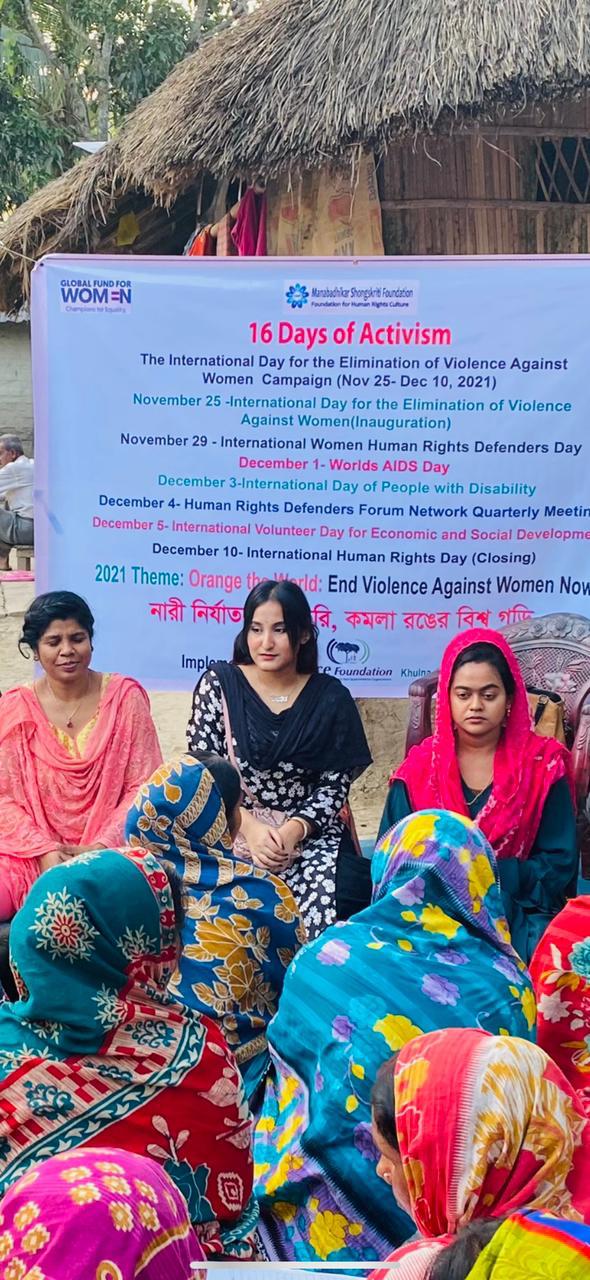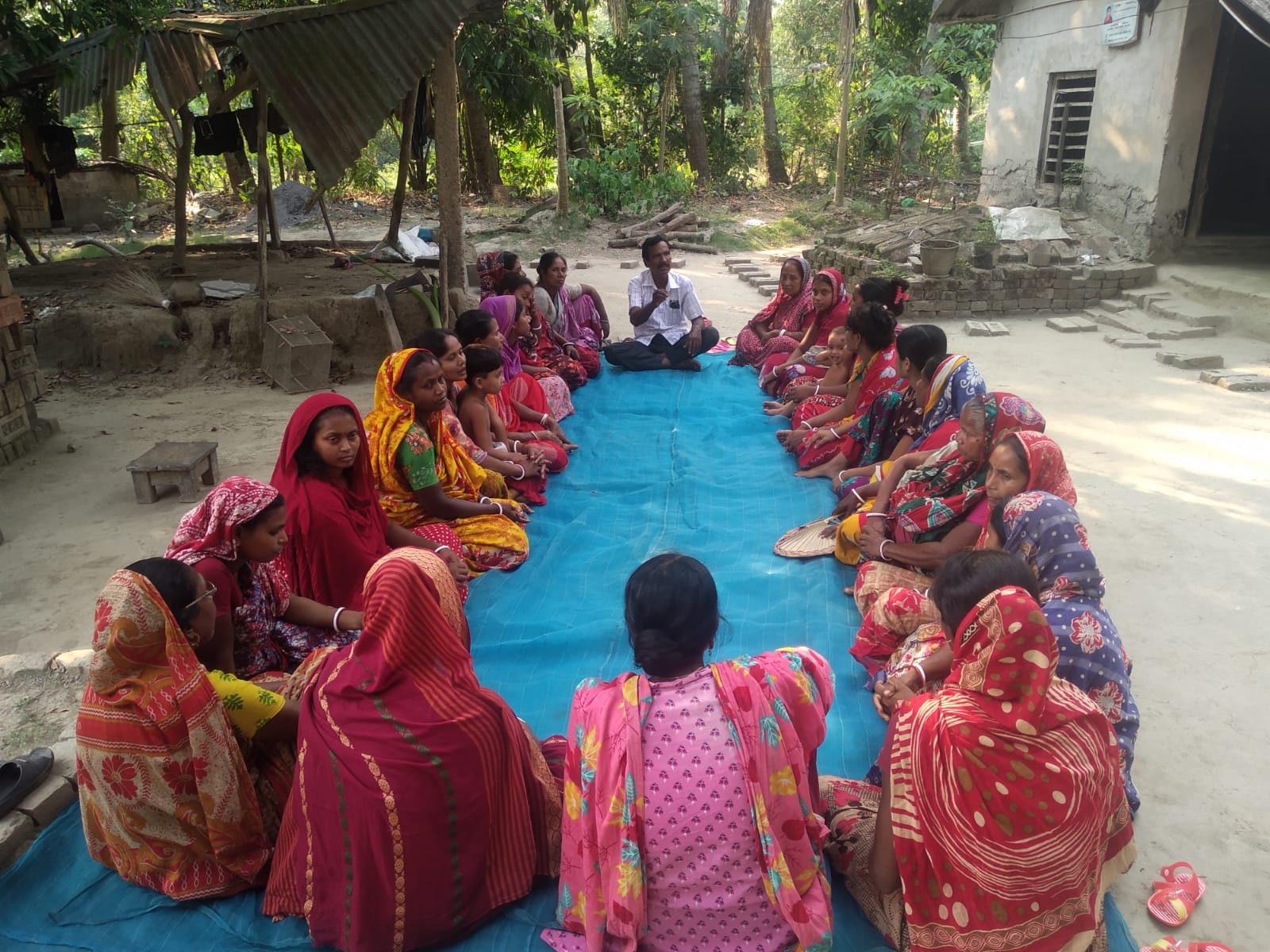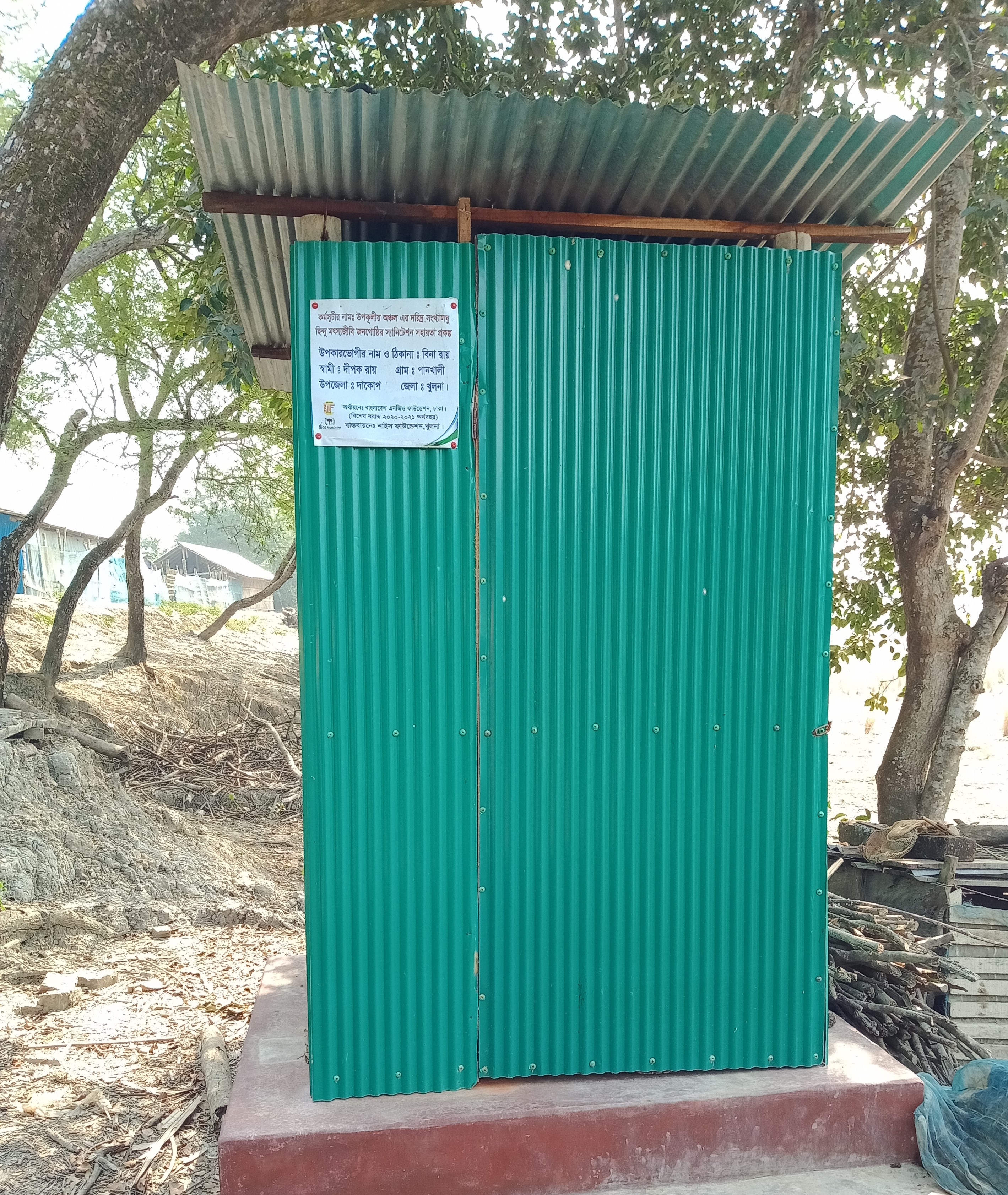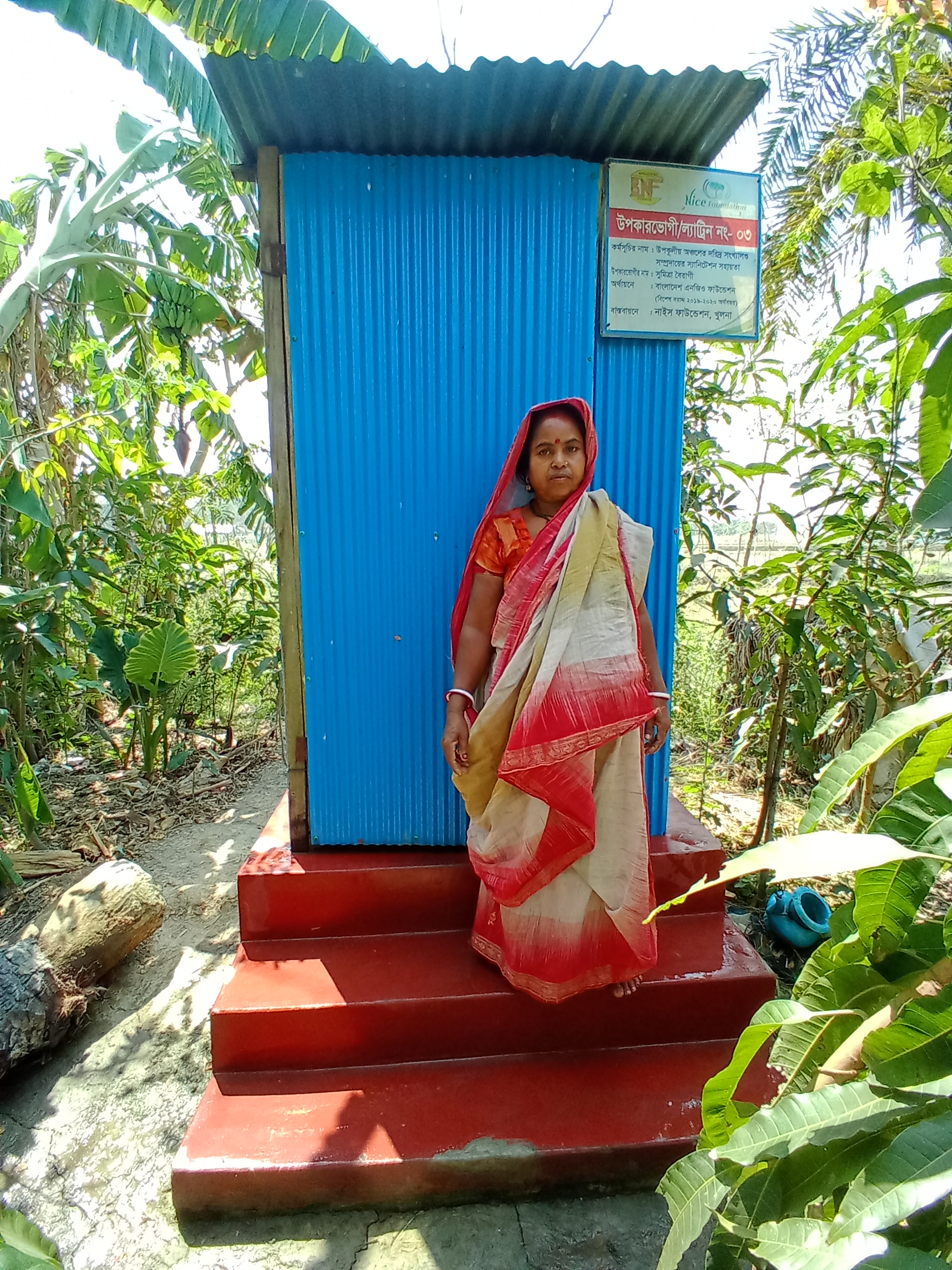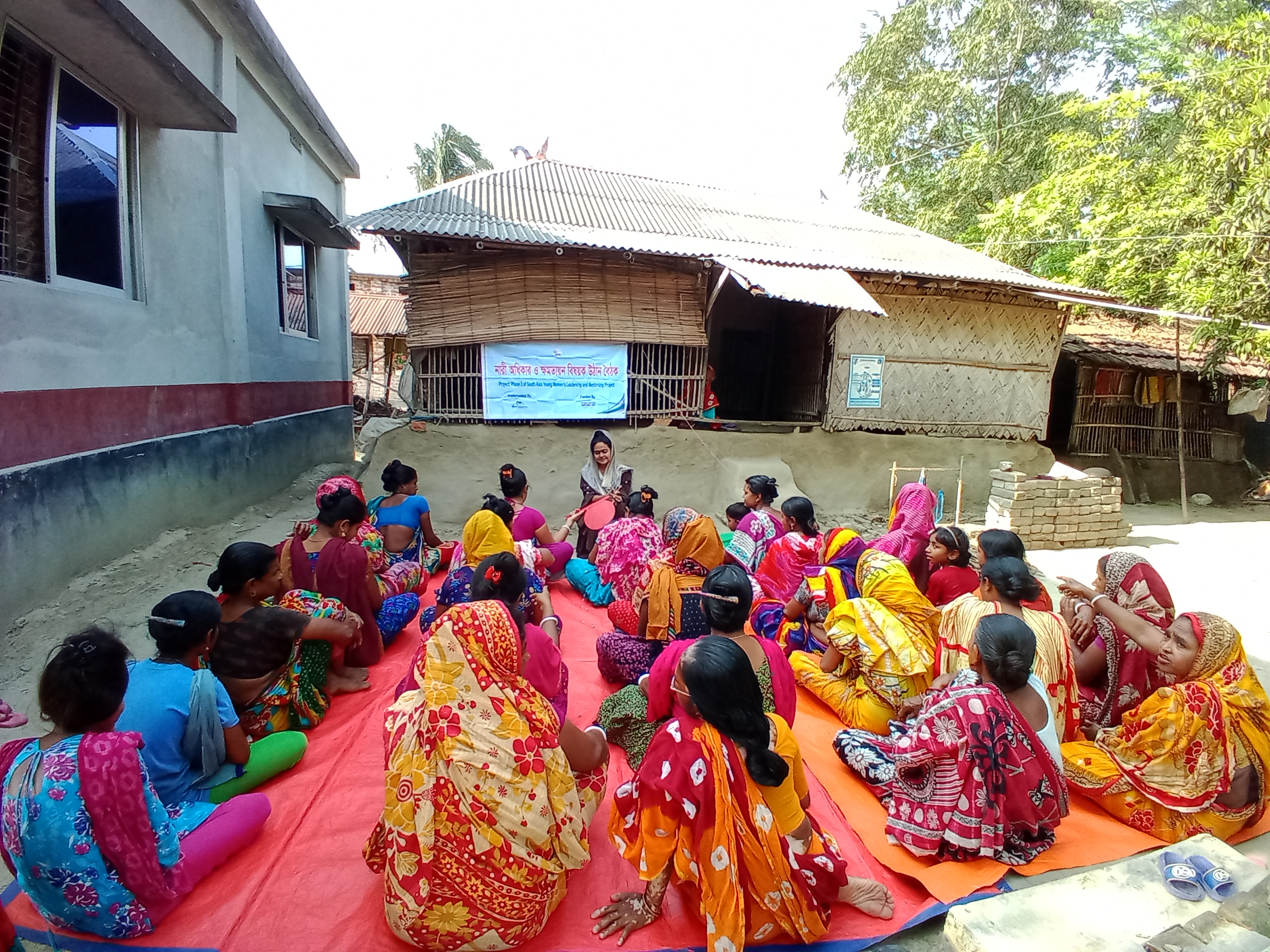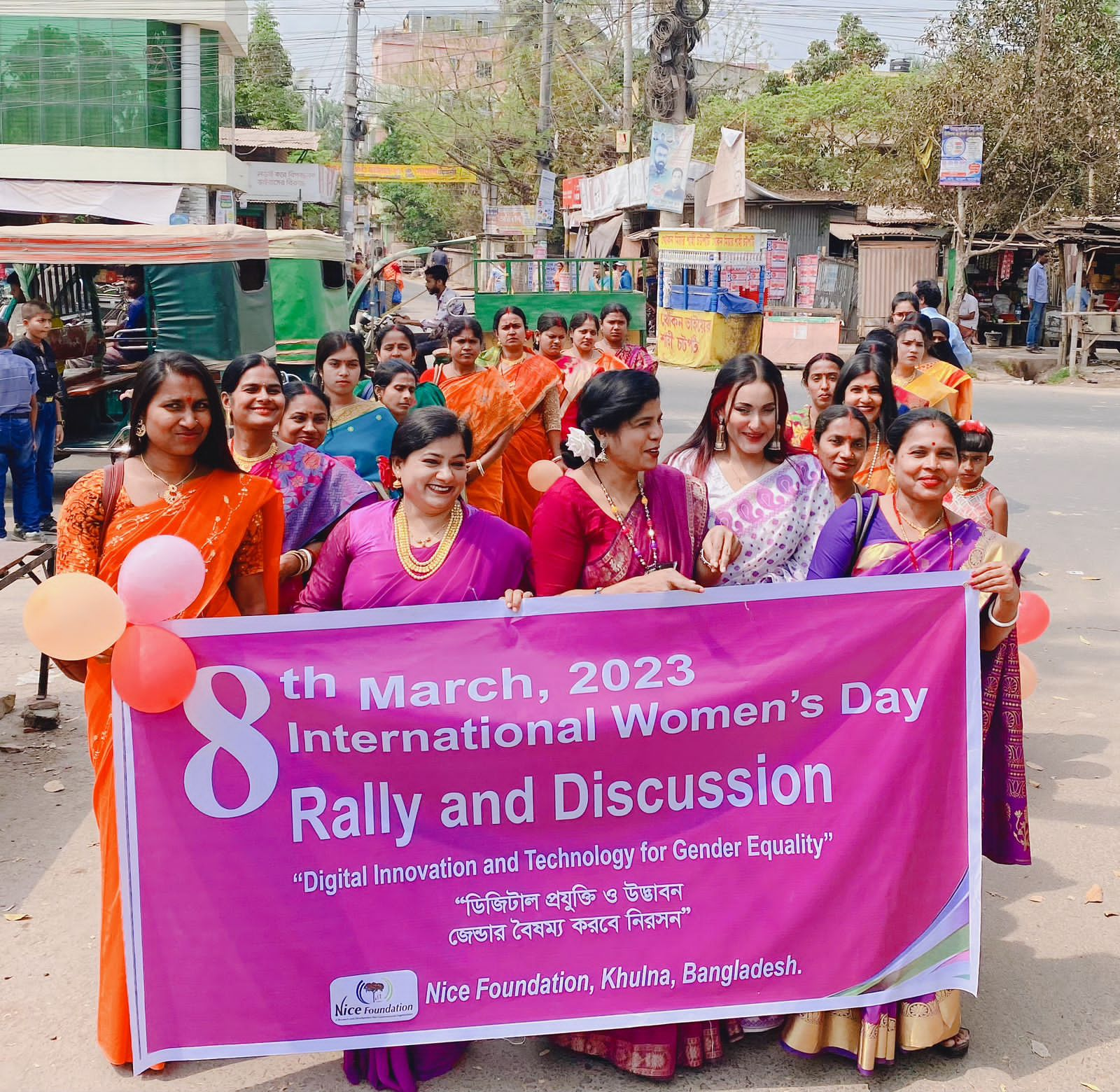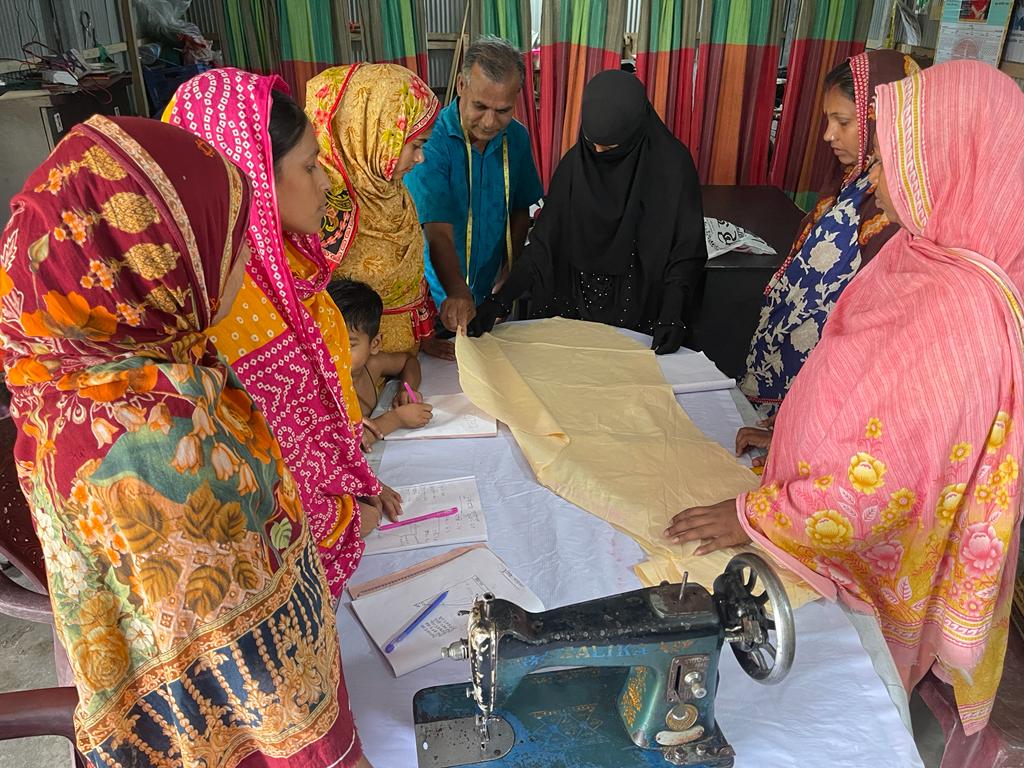Health and Skill Development Training Support to kawra and underprivilege Community
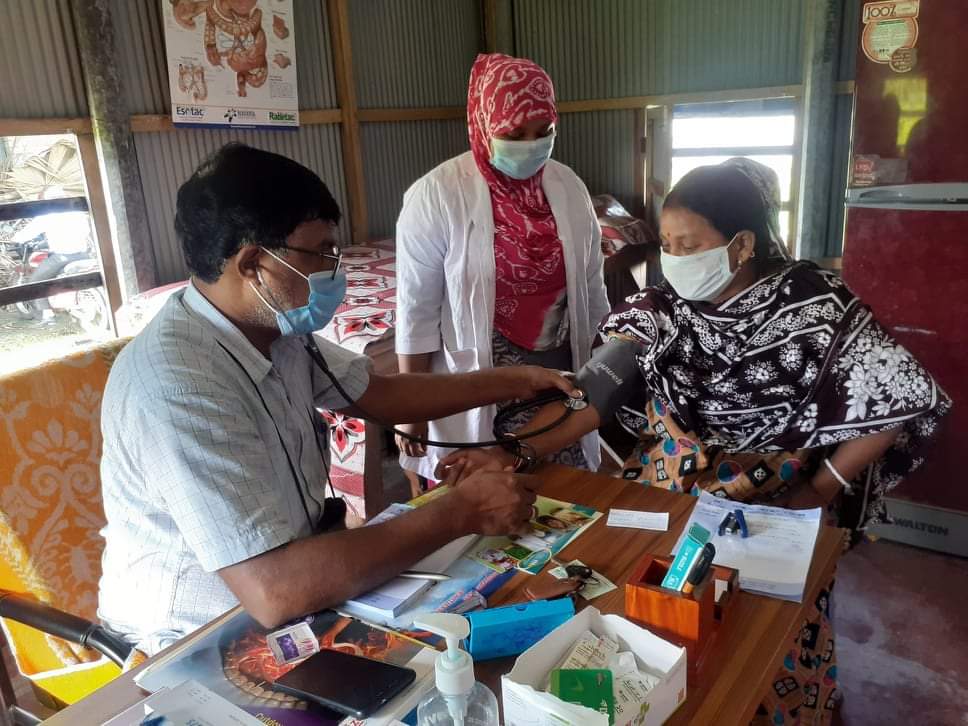
Nice Foundation has been working with the poor community especially religious minority for their socio-economic development since 2005. The journey has been started by doing a research study with the financial support of Research Initiatives Bangladesh as part of promoting PAR (participatory action research). Following the PAR Nice Foundation has linked this pig farming community with government service providers, established hygienic pig farming system by involving Bangladesh NGO Foundation, Upazila Administration, Global Fund for Women, USA and Global Human Rights Defenders of Netherlands and Colin Wilby, UK. After foundation Dr. Ajmal Sobhan who came to know about the pig farming community in early 2011 and had visited the sites in Khulna Aronghata. He has visited house to house and identified the people's need. Based on his visit and the needs of the community he has requested Nice Foundation to develop a proposal with cost allocation.
Initially Dr Ajmal Sobhan has supported the project from 16 June 2011 to June 30, 2012 Later from July 01, 2012 to December 2015 he managed fund from Project Bangladesh, USA which was a strong institutional arrangement. Nice Foundation has received permission from NGOAB. After completion of 3rd phase the community has demanded Dr Ajmal for extension upto 2022 December.
Over the last 11 years Nice Foundation (NF) has achieved some significant results that promoted poor community especially the Kawra who are untouchables in our society. Despites of many limitations of Nice Foundation it has created a solid base in society to work for the development of the poor community. In 2011 Nice Foundation provided educational support to 36 extremely poor students who studied in classes ii, iii, iv & v. The doctoral and nurse support provided round the year for every day except holidays to the poor patients. The project support has ensured continuing of up to 60 students from class one to five in 2016. From 2011 to 2020 December 10 batches of students successfully passed the PSC exam and has admitted to class six in the next years. Therefore, the primary objective of the project "reducing the enrolment and dropout in the class" was fully achieved.
At the end of the piloting phase Dr. Ajmal Sobhan has visited the kawra community in Khulna, interacted with the community people, talked to the individual, conducted meeting with kawra people and guided Nice Foundation to design a project for their school going children who are irregular in school due to not manage school dress, bags, education materials, home coaching by teacher. The past experiences and kawra student’s opinion were incorporated in the whole process of designing of the project. The guardians, kawra targeted student and teachers were involved in the problem identification and planning sessions. These actors were actively involved in the implementation and monitoring of the interventions.
To engage the community as well as our students PB has suggested Nice Foundation to provide them skill development training so that they can increased their technical knowledge and engage income sectors. Accordingly from January 2023 we have started piloting with 2 skill development training on computer and sewing & dress making. This report has been covering the Health and skill development training projects funded by PB, USA.
Project Title: Health and Skill Development Training Support to Kawra and Under
Privileged Community Project
Reporting Period: January to December 2023
Project location: Aronghata, Thana: Digholia, District: Khulna
Project Background
The loss of confidences is over last 200 years by the Kawra community in Aronghata where 100% population was minority Hindu and dependent on Pig farming. They are known as Kawra, based on that the name of the village was “Kawra Para”. They are untouchables known as Dalit. However, over the last decades some were migrated and poor Muslim community started living by purchasing land and renamed the village as Banani Para”. In these areas 80% children were dropped out from the formal schools due to education support. Nice Foundation and Dr. Ajmal Sobhan jointly supported to these community since June 2011 and has significantly reduced the dropout rate at primary level. During last 3 years Dr. Ajmal and AFMRF jointly has expanded the efforts by supporting class six to level 12 for talented students who were passed from Nice Foundation education centre.
Constitutionally all children have basic rights to access to health, education and a balanced diet. But for children from these communities in Bangladesh, the rights are often violated due to poverty, lack of social consciousness and discrimination. Among the dalits in Bangladesh, the Kawra pig-rearing community is the most vulnerable and marginalized group in society. They are treated as ‘untouchable’ within the minority Hindu community and are generally hated by the majority Muslim community because they farm and eat pork. Kawra pig farmers typically have very limited market access and their pork is sold out at very low price. So many are giving up and instead getting jobs as day laborers, which of course is only seasonal.
There are huge scarcities of jobs or income-earning sources. On average, the students of these communities are less talented because of low-standard food at the growth stage and can hardly achieve standard results after our support. Some families have immediate income needs and they want to be involved in income-earning sources especially those who have crossed the 12 level or some family members need skill development to get access to the job market. Considering all these issues some recommendations came from the PB and AFMRF visitors to offer vocational rehabilitation training by establishing a Rehab Centre.
With such economic pressures, many in the community have become the poorest of the poor. Children cannot continue their education due to a lack of proper motivation and financial means. Increased dropout rates lead to more child labor and child marriages in this area. Most of the children cannot prepare their daily homework given by the formal educational institutions, because they don’t have an educated family member to guide them. Their families are unable to afford educational costs, many suffer from malnutrition and consequential poor health.
This project has provided education-related support, supplementary education to children, and gaming materials who studying in classes One to Five. To continue education at the high school level we will provide support for coaching and education materials. For developing skills, we will provide vocational training for male and female students. To sensitization on gender, early marriage, human trafficking, child protection, and improve Water and sanitation we will arrange some sessions during the period. At the same time, the community and our students will be provided with basic health services and nutritious food with the contribution of local donors and parents. The nutrition feed will reduce malnutrition and the children will be attentive to the classes. From our experience, we have found that once a student completes their primary level with a creditable grade, they gain the self-motivation to continue secondary education which ultimately helps to change the living standards of their community.
Objective of the Project
Improve health and skill development for generating income for the Kawra and underprivileged community in Arongahata. This in turn will encourage families to maintain their education at a higher level and thereby reduce child labor, and early marriage, and secure better income sources and above all health outcomes.
Target group:
The Kawra community of Hindu pig-rearing farmers in Bangladesh is one of the most deprived ‘dalit’ (‘untouchable’) communities in the world: illiterate and largely unrecognized by the government and the wider population. Through establishing a vocational Rehab Centre/skill development training, they will be skilled to get access to the job market.
Activity Description
Primary Health Care:
Focuses on enhancing primary health care and treatment services, making them more accessible at the community level. Investments have been made in procuring and maintaining essential clinical service equipment, ensuring the provision of quality healthcare. This includes diagnostic tools, monitoring devices, and treatment materials to support comprehensive health services. To address the shortage of healthcare professionals, part-time doctors, including one male, one female, are engaged two times a week. This initiative, covering 52 weeks per person, enhances healthcare availability and addresses diverse health needs within the community. The female staff nurses play a crucial role in promoting gender-sensitive healthcare. These nurses contribute to a more inclusive and comfortable healthcare environment, addressing the unique healthcare needs of women and fostering trust within the community.
Medicines for Extreme Poor Patients: A dedicated effort is made to provide essential medicines to extremely poor patients. This initiative ensures that financial constraints do not hinder access to life-saving medications, promoting equity in healthcare delivery.
Developed Skill through the Integrated Vocational Rehabilitation Service (IVRS) Centre
Once upon a time in the heart of a bustling town, there stood an Integrated Vocational Rehabilitation Service (IVRS) Centre, a beacon of hope for individuals seeking to enhance their skills and reintegrate into the workforce. Among the various programs offered at the center, two stood out prominently – Tailoring and Basic Computer Training.
The computer training class not only equipped participants with essential digital skills but also opened doors to new opportunities. The sense of empowerment that came from mastering technology was palpable, and it fueled a newfound confidence in their abilities.
Participants from the Tailoring Workshop showcased their beautifully crafted garments at a local exhibition, drawing admiration from the community. Meanwhile, graduates from the Basic Computer Training class secured jobs in offices, breaking barriers that once seemed insurmountable.
The success of the Tailoring and Basic Computer Training programs at the IVRS Centre was not just about acquiring skills; it was about rebuilding lives and reshaping futures. The integrated approach of combining vocational training with rehabilitation services had transformed the center into a haven of empowerment, where individuals rediscovered their self-worth and redefined their identities.
The IVRS Centre continued to be a beacon of hope, guiding individuals toward a brighter and more fulfilling future through the seamless integration of Tailoring and Basic Computer Training.
Progress:
Improved Healthcare: Through health clinics, we reached over 2,000 individuals, providing essential health services and promoting preventive care. This resulted in increased awareness and a positive shift in health-seeking behaviors.
Community Empowerment through Skill Development: The train-the-trainer model resulted in 32 community members becoming certified trainers. This not only enhanced the skill level within the community but also created a network of local expertise, fostering self-reliance.
Training participants (Skill development training)
SL
Name of trade
Batch
Duration
Male
Female
Total
1.
Computer
1
January to June six month
04
02
06
2.
Sweing &dress making
1
January to June six month
0
06
06
3.
Computer
1
July to December six month
06
04
10
4.
Sweing &dress making
1
July to December six month
0
10
10
Total
4
10
22
32
Cultural Integration: Tailoring our programs to align with local cultures significantly increased community engagement. This approach strengthened trust and cooperation, creating a foundation for sustainable health and skill development initiatives.
Conclusion: As we look back on the challenges faced and overcome, the success stories highlight the resilience and determination of Kawra and underprivileged communities. The project's adaptability and community-centric strategies have paved the way for a brighter, healthier future. By addressing challenges head-on and embracing innovative solutions, we are continuing our journey towards empowering these communities and creating lasting positive change.
Impact
Supporting health and skills development, including Swing & Dressmaking and basic computer training, can have a profound impact on the Kawra and underprivileged community. Here are some potential benefits and impacts:
Health services:
· Improved Health Outcomes:
- Access to healthcare resources and information can lead to better health outcomes.
- Health education and awareness programs can help prevent diseases and promote healthy lifestyles.
· Increased Productivity:
- Healthy individuals are more likely to be productive and actively contribute to their community.
- Reduced absenteeism due to health issues can positively impact economic productivity.
· Enhanced Quality of Life:
Improved health contributes to an overall better quality of life for individuals and the community as a whole.
· Community Cohesion:
- Health programs can foster a sense of community as people come together to support each other's well-being.
Developed Skill (Swing & Dress making and Basic Computer Training) through Integrated Vocational Rehabilitation Service (IVRS) Centre
Skills:
· Employability:
- Learning swing & Dressmaking and basic computer skills can enhance employability and job prospects for community members.
- It opens up opportunities for a wider range of employment options, including those in the digital economy.
· Entrepreneurship:
- Acquiring new skills may empower individuals to start their businesses or engage in entrepreneurial activities.
· Educational Advancement:
- Basic computer skills are increasingly essential for education. Access to computer training can bridge the digital divide and improve educational outcomes.
· Technological Inclusion:
- Providing computer training ensures that the community is not left behind in the digital age, promoting technological inclusion.
· Community Empowerment:
- Skill development empowers individuals to take charge of their lives, boosting self-esteem and confidence.
Overall Impact:
· Poverty Alleviation:
- Improved health and skills development contribute to breaking the cycle of poverty by enhancing economic opportunities.
· Community Resilience:
- A healthier and skilled community is likely to be more resilient in the face of challenges, including economic downturns or health crises.
· Social Integration:
- Both health and skills development programs promote social integration by fostering a sense of community and shared goals.
· Long-term Sustainability:
- Investing in health and skills creates a foundation for long-term community development and sustainability.
· Multiplier Effect:
- Positive changes in health and skills within individuals can have a multiplier effect on the community as a whole, creating a positive feedback loop.
It's important to tailor these programs to the specific needs and context of the Kawra and underprivileged community, involving community members in the planning and implementation process for sustainable and impactful results.
Case Study
CASE STUDY-1
Tithi's Journey to Self-Reliance in Sewing and Dressmaking
This case study explores the transformative journey of Tithi, a 27-year-old woman from the village of Aranghata in the Dighlia Upazila of Khulna district, Bangladesh. Born into a poor family of six members, Tithi faced numerous challenges after her father's demise. However, through determination and the opportunity to learn sewing and dressmaking, Tithi has not only become self-reliant but has also improved her family's living conditions.
Tithi's family faced financial struggles after her father, Sheikh Ayanul Haque, passed away. With limited resources and only completing education up to the 7th standard, Tithi's future seemed uncertain. The family's residence in the village of Aranghata added to the challenges, making access to opportunities even more limited.
Tithi's life took a positive turn when she enrolled in sewing training at Nice Foundation. This initiative provided her with valuable skills in sewing and dressmaking, empowering her to generate a regular income. The training equipped Tithi to create various garments, including children's, women's, and school dresses, contributing to her newfound self-sufficiency.
As a result of Tithi's newfound skills, she now earns a steady income ranging from 5000 to 6000 rupees per month. This income has not only improved Tithi's financial stability but has also positively impacted her family's living conditions. Tithi's success serves as an inspiration for others in her community, demonstrating the transformative power of skill development in overcoming economic hardships.
Tithi's journey from a challenging background to a self-reliant and prosperous life through sewing and dressmaking highlights the importance of skill development programs. Initiatives like Nice Foundation play a crucial role in empowering individuals from economically disadvantaged backgrounds, enabling them to break the cycle of poverty and build a better future. Tithi's story serves as a testament to the potential for positive change when individuals are given the opportunity to acquire skills that open doors to economic independence and improved livelihoods.
CASE STUDY-2
Raju Sheikh's Journey to Health with Nice Foundation's Intervention (NF)
Introduction: This case study sheds light on the transformative impact of Nice Foundation's health services on the life of Md. Raju Sheikh, a 32-year-old resident of Deyana, Uttarpara, Daulatpur, Khulna. Struggling with gastric, stomach, and liver problems, Raju's health took a toll due to financial constraints. However, his life took a positive turn when he sought assistance from Nice Foundation's primary health care center in February 2023.
Background: Raju Sheikh, son of Md. Yusuf Sheikh and Rizia Begum, hails from a modest background in the village of Deyana. For an extended period, Raju battled various health issues related to his gastric, stomach, and liver, exacerbating his family's financial strain. The inability to afford necessary medical expenses added to the challenges faced by the Sheikh family.
Intervention: In February 2023, Raju turned to the primary health care center operated by Nice Foundation for medical assistance. Recognizing the severity of his health issues, Nice Foundation provided him with essential medical care and treatment. The intervention not only addressed Raju's health concerns but also facilitated his recovery, enabling him to resume normal activities.
Outcomes: Following the treatment received at Nice Foundation's health center, Raju Sheikh experienced a significant improvement in his health. He successfully recovered from the gastric, stomach, and liver problems that had previously debilitated him. Raju's gratitude towards Nice Foundation is evident, as he attributes the revival of his health to the organization's timely and effective healthcare services.
Conclusion: Raju Sheikh's case exemplifies the positive impact of Nice Foundation's health services in revitalizing the lives of individuals facing health challenges in underserved communities. By providing accessible and affordable healthcare, Nice Foundation not only contributed to Raju's recovery but also played a pivotal role in enhancing the overall prosperity of his family. This case underscores the importance of organizations like Nice Foundation in addressing healthcare disparities and promoting well-being among marginalized populations, fostering a healthier and more resilient community.
CASE STUDY-3
Empowering Futures
GM Alauddin Azad's Journey from Unemployment to Entrepreneurship through Computer Training
Introduction: This case study explores the inspiring story of GM Alauddin Azad, a 47-year-old resident of Miksimil, Dumuria, Khulna, who triumphed over unemployment by acquiring computer skills through the training provided by the Nice Foundation. Facing a prolonged period of joblessness, Alauddin's life took a positive turn after undergoing computer training, leading him to establish a business near BL College.
Background: GM Alauddin Azad, son of Kesmat Ali Ghazi and Asia Begum, found himself in a challenging situation as he struggled with unemployment for an extended period. The absence of work opportunities not only impacted Alauddin's financial stability but also posed obstacles to achieving his goals and aspirations.
Intervention: Recognizing the need for skill enhancement, Alauddin seized the opportunity to undergo computer training offered by Nice Foundation. This intervention not only equipped him with valuable computer skills but also opened new avenues for income generation and self-sufficiency. Encouraged by the training, Alauddin embarked on a new entrepreneurial journey.
Outcomes: Following the computer training, Alauddin successfully established a shop in front of BL College for business purposes. This venture not only provided him with a source of income but also allowed him to contribute actively to the local economy. Alauddin's newfound entrepreneurial spirit and financial stability have ignited hope and optimism in achieving his long-term goals.
Conclusion: GM Alauddin Azad's journey from unemployment to entrepreneurship stands as a testament to the transformative impact of skill development programs, exemplified by the Nice Foundation. By providing individuals with the tools and knowledge needed to thrive in the digital age, organizations like Nice Foundation (NF) play a pivotal role in fostering economic empowerment
Challenges and overcome
The Kawra and Underprivileged Community Project is dedicated to transforming lives by providing health and skill development training support to marginalized communities. As we reflect on the past year's endeavors, it is essential to acknowledge the challenges faced and the innovative strategies employed to mitigate them, ensuring the success of our initiatives.
Challenges:
Limited Access to Healthcare: Kawra and underprivileged communities often lack access to basic healthcare services, hindering the effectiveness of health training programs.
Mitigation: Collaborated with local healthcare providers to conduct mobile health clinics, bringing essential services directly to the communities. This strategy improved accessibility and engagement.
Infrastructure Constraints: Inadequate infrastructure posed challenges for skill development training sessions.
Mitigation: Utilized community spaces, such as schools and community centers, and invested in portable training equipment. This adaptive approach ensured training continuity despite infrastructure limitations.
Cultural Sensitivity: Varied cultural norms require careful consideration to ensure the acceptance of health interventions.
Mitigation: Conducted extensive community consultations to understand cultural nuances. Developed tailored training materials and methods that respected and aligned with local customs, fostering a sense of ownership and acceptance.
Limited Resources: Resource constraints impacted the sustainability of skill development initiatives.
Mitigation: Implemented a train-the-trainer model, empowering community members to become trainers and facilitators. This not only maximized the impact but also created a sustainable framework for ongoing skill development.
Digital Device: Lack of digital literacy and access to technology hindered the implementation of remote training sessions.
Mitigation: Established community learning centers equipped with computers and internet access. Conducted hands-on training to enhance digital literacy, enabling community members to participate in virtual skill development programs.
Future Plan
1. Community Needs Assessment:
Conduct a thorough assessment of the community's health and skill development needs through surveys, interviews, and collaboration with local leaders.
2. Health Initiatives:
Medical Camps and Health Promotion:
· Organize regular medical service/camps to provide basic healthcare services.
· Conduct health sessions on topics like hygiene, nutrition, and preventive healthcare.
Health Education Programs:
· Develop and implement health education programs to raise awareness about common health issues prevalent in the community.
3. Skills Development Programs:
Vocational Training:
· Identify key organization/industries in the region and offer vocational training programs in collaboration with local businesses.
· Focus on skills that are in demand to enhance employability.
· Organized vocational training for new batches as follow as bellow:
Sl.
Name of trade
Batches
Parsons
Course Duration
Remarks
1.
Computer Course
2
12
6 months
2.
Sewing & Dress making
2
12
6 months
Girls & women
3.
Carpentry course
2
12
6 months
4.
Plumbing course
2
12
6 months
5.
Masson Course
2
12
6 months
Digital Literacy Programs:
· Introduce programs to improve digital literacy, as it is becoming increasingly essential for various job sectors.
4. Infrastructure Development:
Community Centers:
· Establish community centers equipped with classrooms for training, healthcare facilities, and spaces for communal activities.
Internet Access:
· Work towards improving internet access in the community to facilitate online learning and communication.
5. Partnerships and Collaborations:
Local NGOs and Government Agencies:
· Collaborate with local NGOs and government agencies to leverage resources and support for the community.
Corporate Partnerships:
· Seek partnerships with corporations willing to invest in community development projects or provide sponsorship for training programs.
6. Monitoring and Evaluation:
· Implement a robust monitoring and evaluation system to assess the impact of the programs.
· Gather feedback from the community regularly to make necessary adjustments.
7. Sustainability:
· Develop strategies to make the initiatives self-sustainable over time, including training local community members to take on leadership roles.
8. Advocacy and Awareness:
· Raise awareness about the community's needs and achievements to attract further support from external sources.
By combining health initiatives with skill development programs, the plan aims to address both immediate health concerns and the long-term empowerment of the Kawra and Underprivileged community. Regular evaluation and flexibility in approach will be key to adapting the plan to the evolving needs of the community.
Conclusion
The annual report on Health and Skills Development, with a focus on Swing & Dress making and Basic Computer Training support to the Kawra and underprivileged community, underscores the positive impact of our initiatives in empowering individuals and enhancing their overall well-being. As we conclude this reporting period, several key findings and achievements stand out:
Improved Health and Well-being: Our health programs have contributed significantly to the improvement of the community's overall well-being. Through health education, preventive measures, and medical assistance, we have witnessed a positive shift in health outcomes. Regular health check-ups, awareness campaigns, and access to essential healthcare services have played a pivotal role in promoting a healthier lifestyle among the community members.
Skills Development and Economic Empowerment: The Basic Computer Training and Swing & Dress making skill development programs have equipped individuals with valuable skills, fostering economic empowerment and self-sufficiency. Participants have gained proficiency in essential computer skills, opening up new opportunities for employment and entrepreneurship. The Swing & Dress making training has not only provided a traditional skill set but also preserved cultural heritage, promoting a sense of identity and pride within the community.
Community Engagement and Participation: The success of our initiatives is closely tied to the active participation and engagement of the community. Through workshops, community events, and collaborative projects, we have strengthened the bonds within Kawra and empowered individuals to take ownership of their development. This sense of community involvement has been a driving force behind the positive changes we've witnessed.
Measurable Impact and Sustainable Development: Our commitment to sustainable development is evident in the measurable impact of our programs. Monitoring and evaluation processes have allowed us to track progress, identify areas for improvement, and adapt our strategies accordingly. The goal is not only to address immediate needs but also to create lasting change that will benefit the community for years to come.
Challenges and Future Strategies: While celebrating our achievements, we acknowledge the challenges faced during the reporting period. These challenges, be they logistical, financial, or environmental, guide us in refining our strategies for future endeavors. Flexibility and adaptability will remain key as we navigate the evolving landscape of community development.
In conclusion, the annual report reflects the dedication and hard work of our team, partners, and the community itself. The positive outcomes witnessed in health improvement, skills development, and community engagement underscores the transformative power of targeted interventions. As we move forward, we remain committed to fostering sustainable development, promoting resilience, and uplifting the Kawra and underprivileged community to create a brighter and more prosperous future for all.

